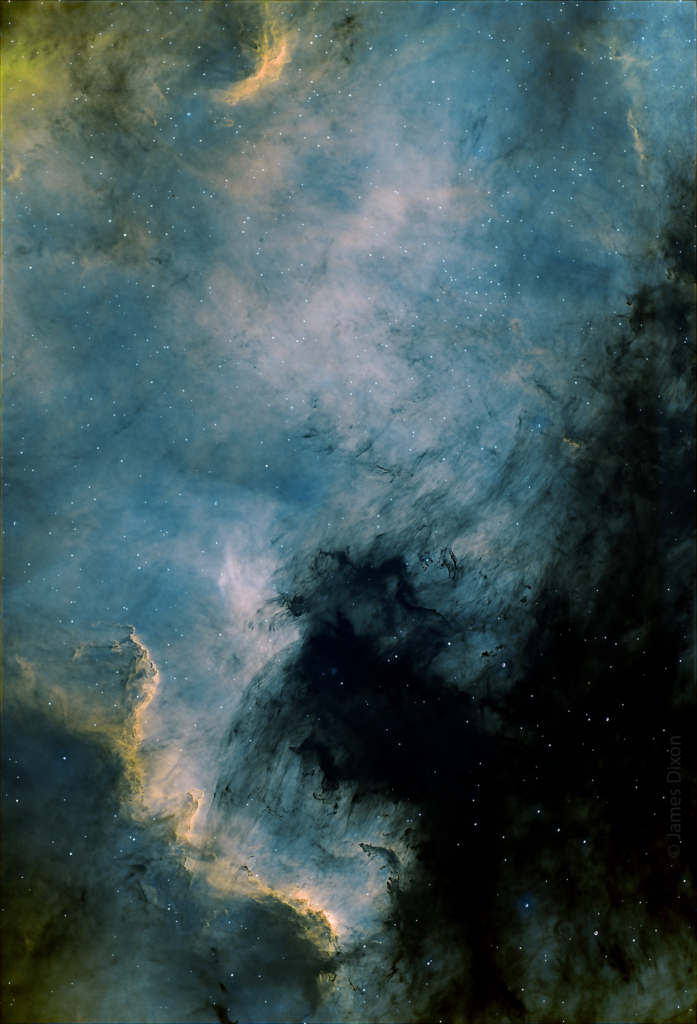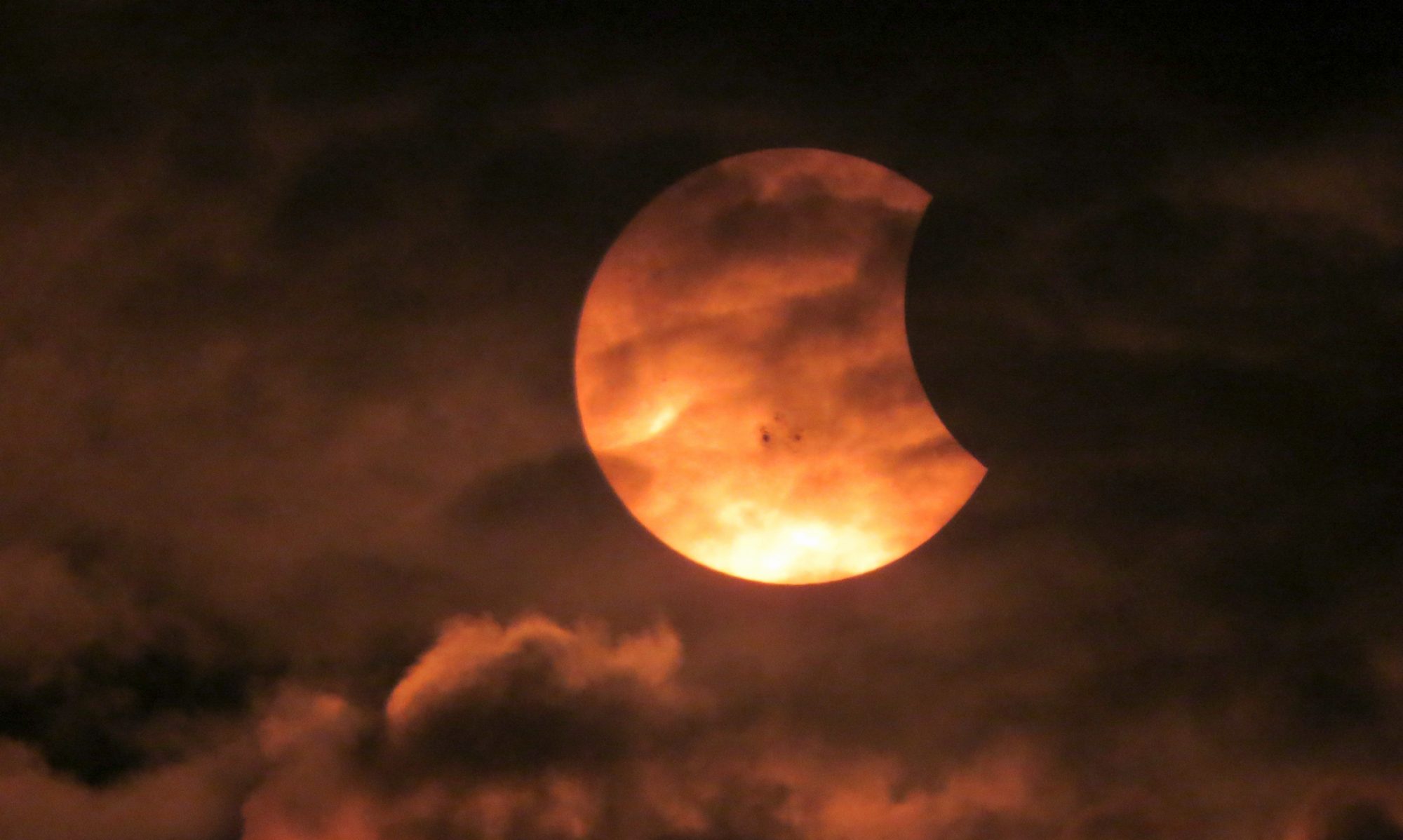Wednesday night was a good night at the River Ridge Observatory. Not too cold and practically no wind and no dew. I decided to image NGC 7000, the North America Nebula, with my Hyperstar enabled C11 and an IDAS NBZ UHS dual narrowband filter and my ZWO ASI 294 MC Pro camera. I got three hours of data at f/1.9.

I decided to go all fake-Hubble Palette on this. If you are not aware, the Hubble palette uses filters to extract red from Hydrogen alpha and a deeper red from Sulphur II and blue/green from Oxygen and a monochrome camera. Since the first two are red, you can’t do a true Hubble palette with a one shot color camera like the 294MC Pro. But you can fake it.
Here’s information about this nebula from Wikipedia: https://en.wikipedia.org/wiki/North_America_Nebula


